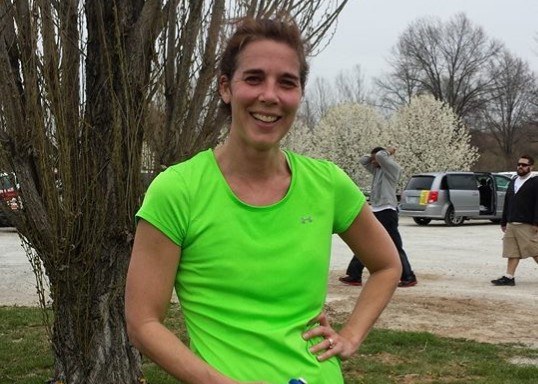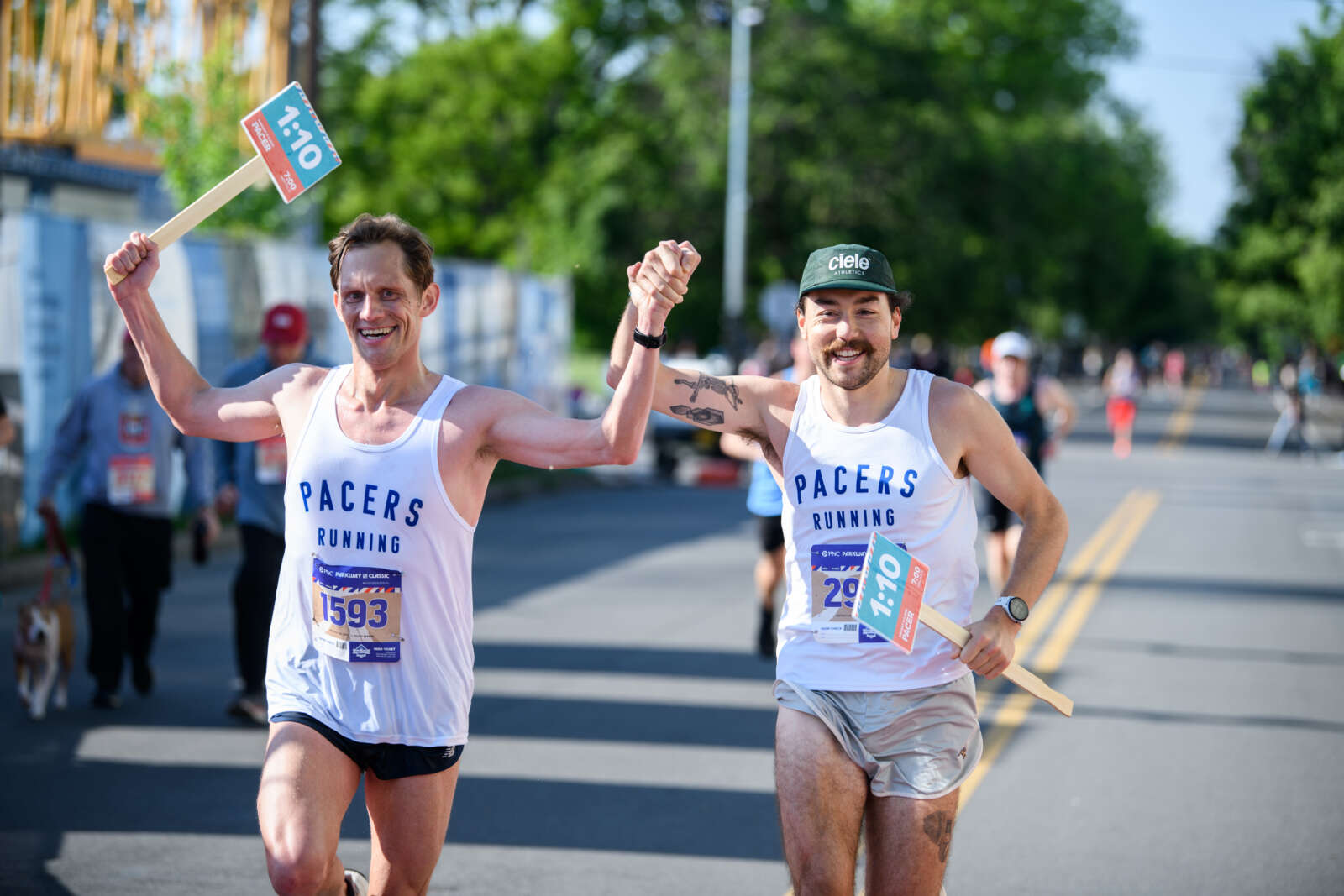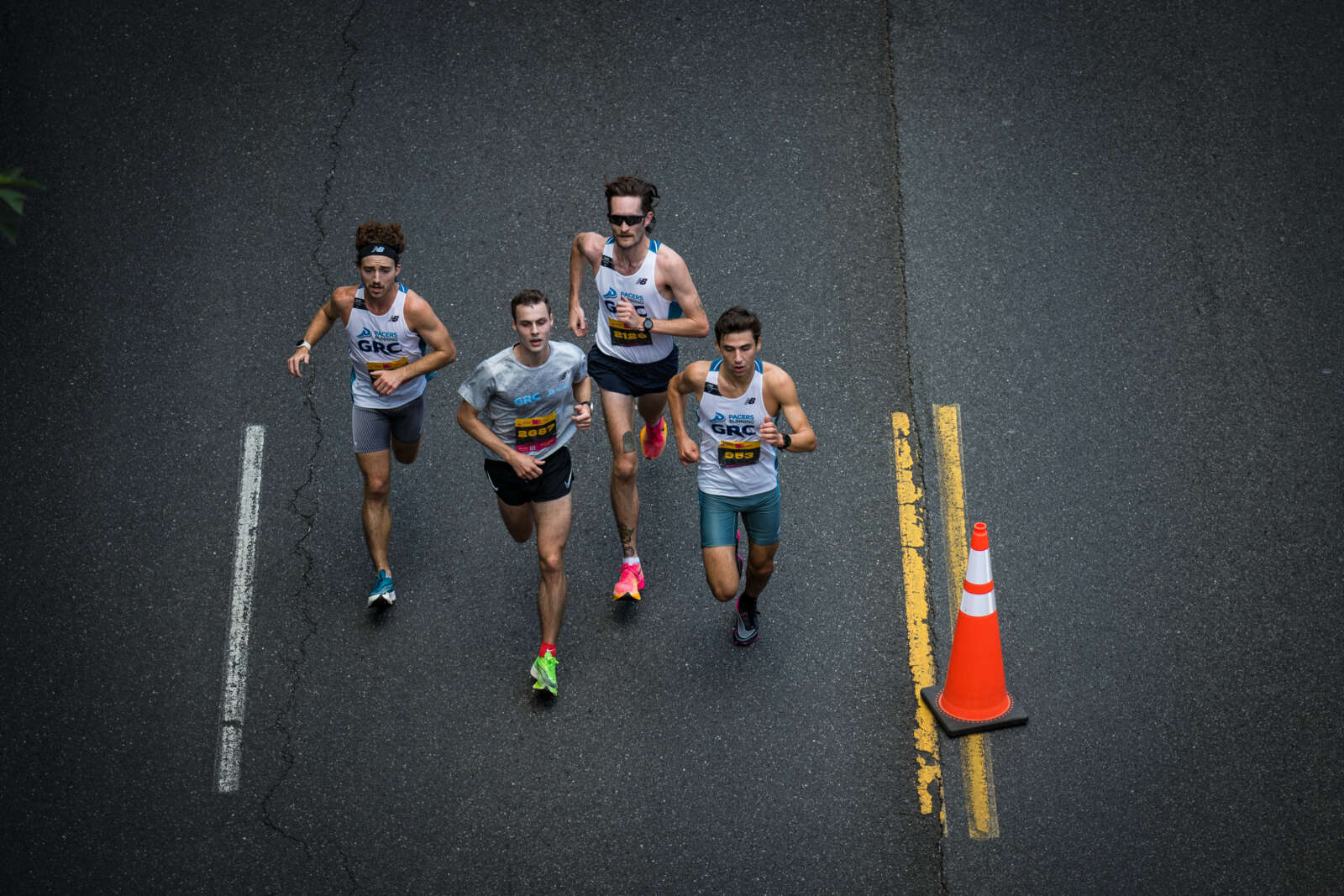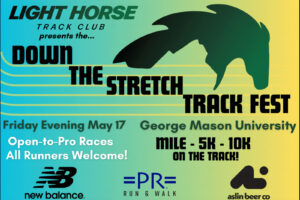
The D.C. area is home to one of the most vibrant running communities in the world, with multiple races happening every week. But it’s easy for runners to miss the inner workings when they’re focused on getting to the finish line.
Lisa Reeves is the race director for Pacers running, a role she never expected to have.
“I didn’t grow up saying I want to be a race director,” she said.
Reeves started running in 2007 and volunteered to help at races from time to time. But after deciding to take her career in a different direction, she eventually started working for Pacers for in 2008.
Before taking on the role of race director, Reeves worked as a pastry chef.
“The kitchen life just wasn’t for me,” she said, though she sees value in her history in this role. “The culinary background and being disciplined is what set me up to be so successful as a race director.”
Pacers’ race series includes 18 events each year, all of which Reeves directs. One or two races are typically added to the Pacers lineup each year, usually replacing a race that “retires.”
“My favorite is always a toss up between the Parkway Classic first and second is the Four Courts Four Miler,” she said.
Reeves particularly enjoys the Four Courts Four Miler as she gets to dress up and play the role of the leprechaun which runners must try to beat. Not only does she enjoy playing the role of leprechaun, but she likes that this forces her to hand the reins off to her staff and allows her to interact more with the runners.

Terri Marlin is the race director for PR Races, which ranges from 25-30 races per year. She has been with PR Races for over six years, but only took on the role of race director for the last four, having come from a background in swimming. Prior to being PR Races’ full-time race director, Marlin managed swim meets.
Her favorite races include the South Lakes 10K and the Leesburg 20K, which PR Races inherited a few years ago.
“Leesburg is a lot of fun because there is so much going on. There are some people who have done it year after year so there’s a lot of nostalgia to it,” she said.
First things first
When setting up a new race, Reeves first wants to establish its purpose: “It is to raise awareness? Is it a fundraising event? Is it an acquisition? Is the purpose a unique experience? What makes this race stand out from the others to ensure a successful event for year over year return?”
From there, Reeves looks to see what other races are in the area at that time. Then comes the choice of distance and location.
Marlin agrees. “If we add [a race] it’s usually because we feel there’s a need whether it’s a need on the calendar to fill the wall or we feel that there’s a theme or purpose for one. We definitely find the holiday-themed races tend to be the best. Sometimes we’ll add one because we think it’ll be good to add a distance.”
“Anywhere from 9 to 12 months out, we start talking about a concept,” Marlin said.
Permitting is also a huge factor. “We have to think about how far out we need to reserve the date in a certain jurisdiction. Every jurisdiction has different requirements. Certain areas need a few months’ notice and others need a year. All it has to do with when you file a permit,” Reeves said. “[The] National Parks Service can’t do more than a year in advance for example.” The NPS even has restrictions on hosting events on certain dates altogether.
Some areas are simply off-limits outright. For example, certain areas in Arlington have moratoriums on events because of the overload on local communities.
“We do our best to limit impact on residents. We have to be respectful of the fact that we are running though areas where people live,” Reeves explains. “For example, there are so many races in Crystal City that Arlington will not approve [new ones]. There are other areas where they have those restrictions – other cities as well, not just Arlington.”
Having recently secured permission to do races at One Loudoun in Ashburn, Marlin is currently in the process of setting up a new 10K in that area for March of 2019.
“Yesterday we secured the name. Sometimes it’s really easy [to come up with names]. Sometimes it takes a lot of thought. We want something unique and thematic. We like alliteration when we can make it work,” she said.
The name she chose: The Pot-O-Gold 10K.
“Sometimes the name pops and we come up with a picture or idea in our head. In this case, we did it in reverse. We came up with the idea of a pot of gold with shamrocks coming out of it,” Marlin explains.
Course considerations
Course capacity, design and frequency of use are also important factors in setting up races. “If [the course] has been used before, [we look at] how many races run through this. That lets you know if there is chance of it succeeding. Can’t do same thing every time. There wouldn’t be any uniqueness in that to make it desirable from a runner participation standpoint,” Reeves said.
Marlin disagrees. Unlike Pacers, PR Races tends to re-use certain courses multiple times for races throughout the year. She finds value in this.
“[With reusing courses], there is a comfortability aspect from all sides, from us, from the center, from the police, because everybody knows what to do,” she said. “From a setting-up standpoint, it makes it easy. We know the parameters and what we can and can’t do. From a runner standpoint, if you were to survey 100 runners, many would say ‘I love to run the same course multiple times in a year to compare times.”
On top of that, reusing the same course makes it easy from a management and organizational standpoint. Or as Marlin said, “We don’t have to reinvent the wheel every time.”
Budget is also a key factor in setting up races, especially when it comes to newer races that are not yet established. “You want to keep things simple to start for newer races,” Reeves said. “[It’s a] good idea to have one distance instead of multiple distances. One t-shirt design, unisex, to start in the first year.” Other costs include permitting fees, labor expenses, vehicle rentals, signage and more.
All these costs also affect the pricing of the race and how much runners are charged for participating.
Once a theme, location, distance and cost are established, the next step is to map the course.
Both Pacers and PR Races outsources its mapping through USATF. Local certifier Bob Thurston maps many courses in the area. He and other certifiers like him ride on bicycles with a device attached to their front wheel called a Jones Counter. The counter tracks how far it has traveled with precise accuracy. To maintain safety while riding the bicycle, certifiers are provided with a police escort.
Courses are measured by using the shortest route possible, which means hugging turns and taking tangents. Sometimes this can cause confusion from runners who may not run the course this way. “Many people will finish an event with their GPS watch and say that the distance is wrong. But the course is measured via the shortest possible route,” Reeves explains.
After the course is measured, the final touches can come into place.
“As we get closer, we’ll do the shirts and the bibs,” Marlin said. “We tend to have the logos way in advance come time. Bibs we do four to six weeks out. Shirts are usually two weeks out.”
Pacers and PR Races both operate a variety of races of varying scales. Regardless of participant volume, Reeves said her process is the same every time. “Any event is scalable. For my purposes, the size of the event has the same logistical planning for setting up whether I have 10 people or 2,000 people.”
“[For the] Parkway Classic, we started working for the 2019 race the day after we finished for 2018,” Reeves said. “Logistically the Parkway Classic is the most challenging and most rewarding because it gives us an opportunity to put into action everything that we’ve been working on throughout the year … I like to call it my final exam for the year.”
Forecasts
Both Reeves and Marlin agree that weather is easily the largest struggle when it comes to race organization.
In general, races are not usually canceled due to weather, though it has happened from time to time. Instead of cancel, race directors prefer to adapt to less-than-ideal conditions.
“[In] 2015, we actually had to shorten the 10K distance toward the end of the St. Patrick’s Day race due to an ice storm,” Reeves said.
And at the 2018 New Year’s Day 5K in Reston, Marlin was forced to change the course due to ice on the WO&D Trail. Instead, she made the decision to do loops in the Reston Town Center to fill the 5K distance. “We had two or three people who were really angry. But most people were happy for still getting it in and not canceling. In the end, people really had fun,” Marlin said.
“You can also have beautiful things happen [due to weather]. We did the Run With Santa one year where it started to snow right at the race start and it was beautiful,” she said.
A unique element to the D.C. region is also the potential for federal government shutdowns, which would close national parks, including the George Washington Memorial Parkway and West Potomac Park. In 2013, a shutdown threatened the Parkway Classic.
“We didn’t figure out until midnight the night before that the race was going to happen,” Reeves said.
In the end both Reeves and Marlin find the job rewarding and a great service to the community as a whole.
“Our mission and passion is ‘For Every Run’, so we serve the local running community in this NOVA/DC area,” Reeves says. “We come at it from a lot of supportive angles as far as community is concerned and I think that is how we stay engaged.”
Recent Stories
Down The Stretch Track Fest
Down The Stretch Track Fest is a track celebration!
A distance-focused track meet at George Mason University featuring community-to-pro-level races on Friday evening, May 17th.
New Balance merch, Aslin Beer, music all night, and announcers keeping you up-to-date on the
Run the Greenway
We are just days away from the 4th annual Run The Greenway Race and
spots are filling up fast! We don’t want any Jedi to be left behind at this year’s
5K, 10K, or 800-meter Kids Fun Run, or virtual







